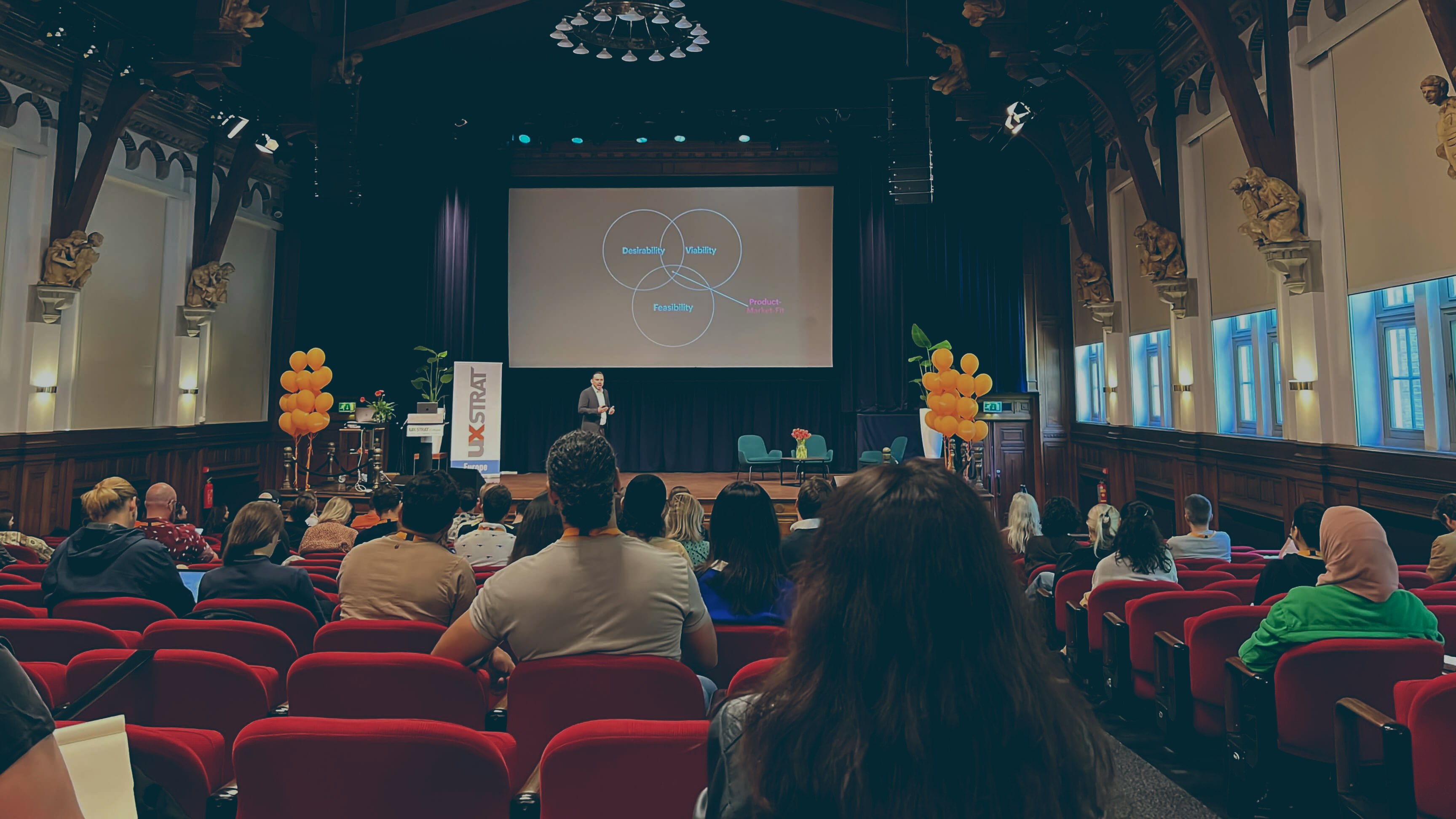Highlights of UX STRAT Europe 2022
Author
Rob van der Haar
Published
28 June 2022
Reading time
8 minutes
"How nice it is that we can do this together again!" That was the most frequently heard comment during the 2022 edition of UX STRAT Europe. Due to the pandemic, the event was fully online in 2020 and in 2021 the attendance was half what it used to be. According to the initiator of UX STRAT, Paul Bryan, there were more participants this year than last year, but certainly not the numbers of pre-Corona. For many, and also for me, this was the first physical conference in two years.
UX STRAT is an international conference with a focus on design strategy and innovation. UX STRAT has been around for almost 10 years and is now held in the United States, Europe and Asia. Informaat is a regular participant in this conference but is also a regular sponsor and supplier of speakers. For example, my colleague Susanne van Mulken and I have been on stage during previous editions with the topics Customer Experience Framework, a Collaboration Model for an Experience Driven Organization and Data Driven Experience Design. This time we sat in the room with our colleagues Daco and Danny and were inspired by others.
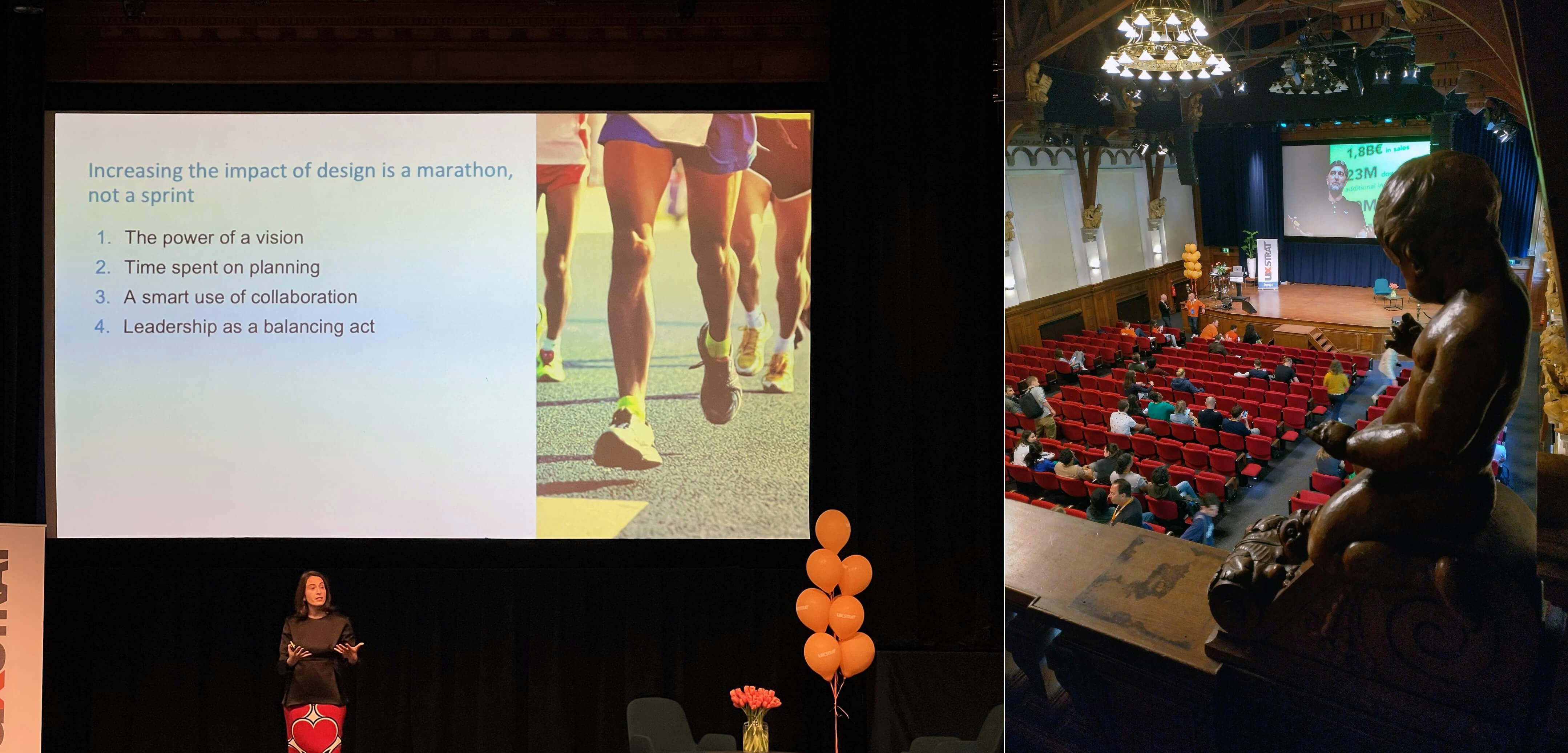
The Europe edition again took place in the Tropical Institute in Amsterdam and had the theme "Meaningful Relationships". The event lasted three days of which one day with workshops and two days with 'single track' presentations. Topics covered included:
- Data Driven Design
- Artifical Intelligence
- Generative User Research
- Psychological Safety
- Design Organization and the Metaverse.
Once again there were interactive sessions in the form of 'Discussion Pods' with the following topics: Health and personal wellbeing, Enjoyable work and financial growth and Sustainability and clean energy.
Usually, the presentation and a video summary become available a few weeks after the conference. As a forerunner, you can already read my highlights. View the full overview of the program.
Strategic Design: Trends and Innovations
Josephine Scholtes is a UX Consultant at Microsoft and also has her own podcast about Design Strategy.
From her conversations with various design strategists, she has distilled the following trends:
Humanity Centred Design: this is no longer about the individual but about communities and the resulting complex problems. By analyzing the "human-caused system", the real problem is discovered that you can then tackle with targeted interventions.
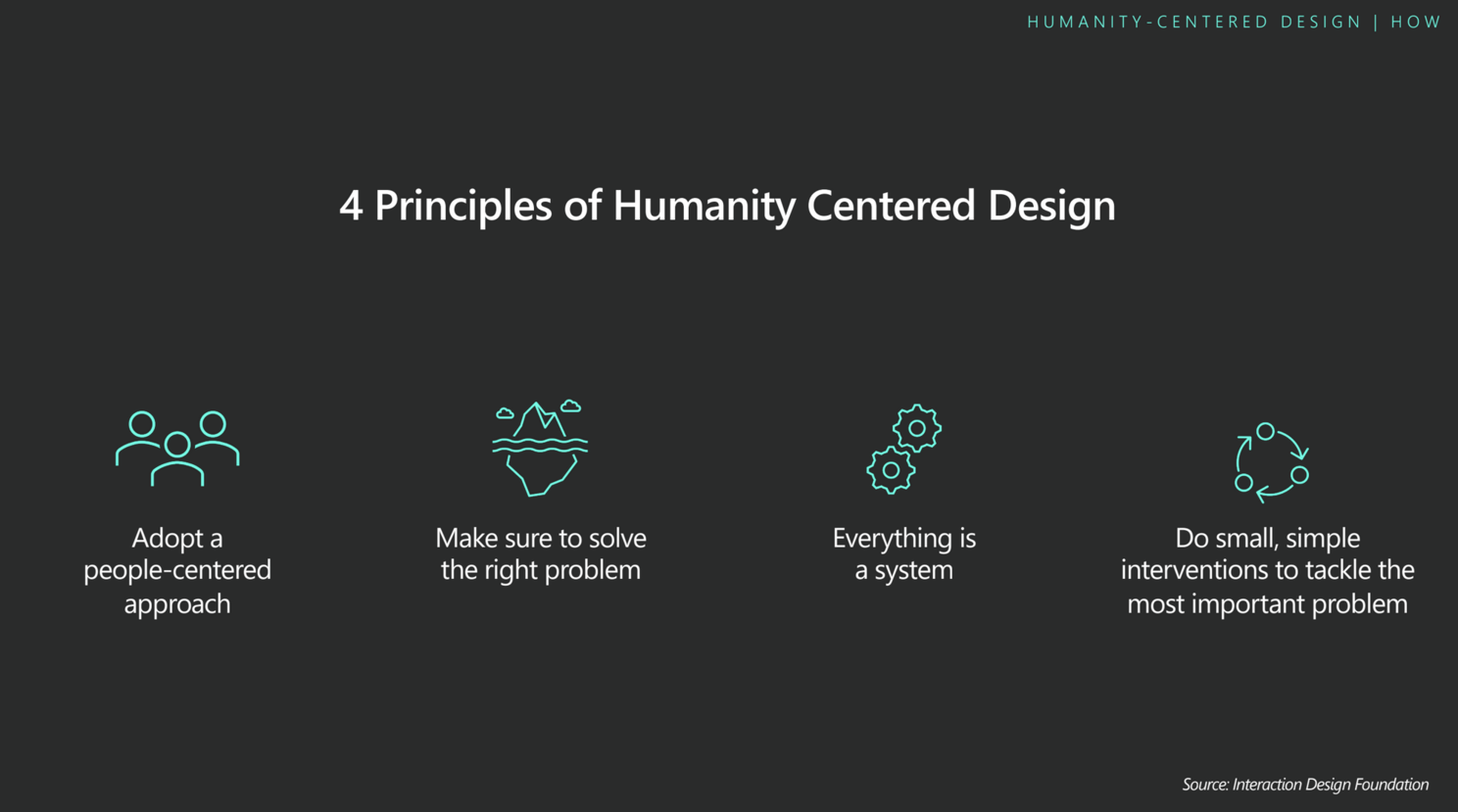
Need Based Personas: Go beyond demographic personas by focusing on shared needs. This type of persona works better when designing new situations because it removes unconscious biases. One way to create need based opersonas is with the Morphological Tension Model.
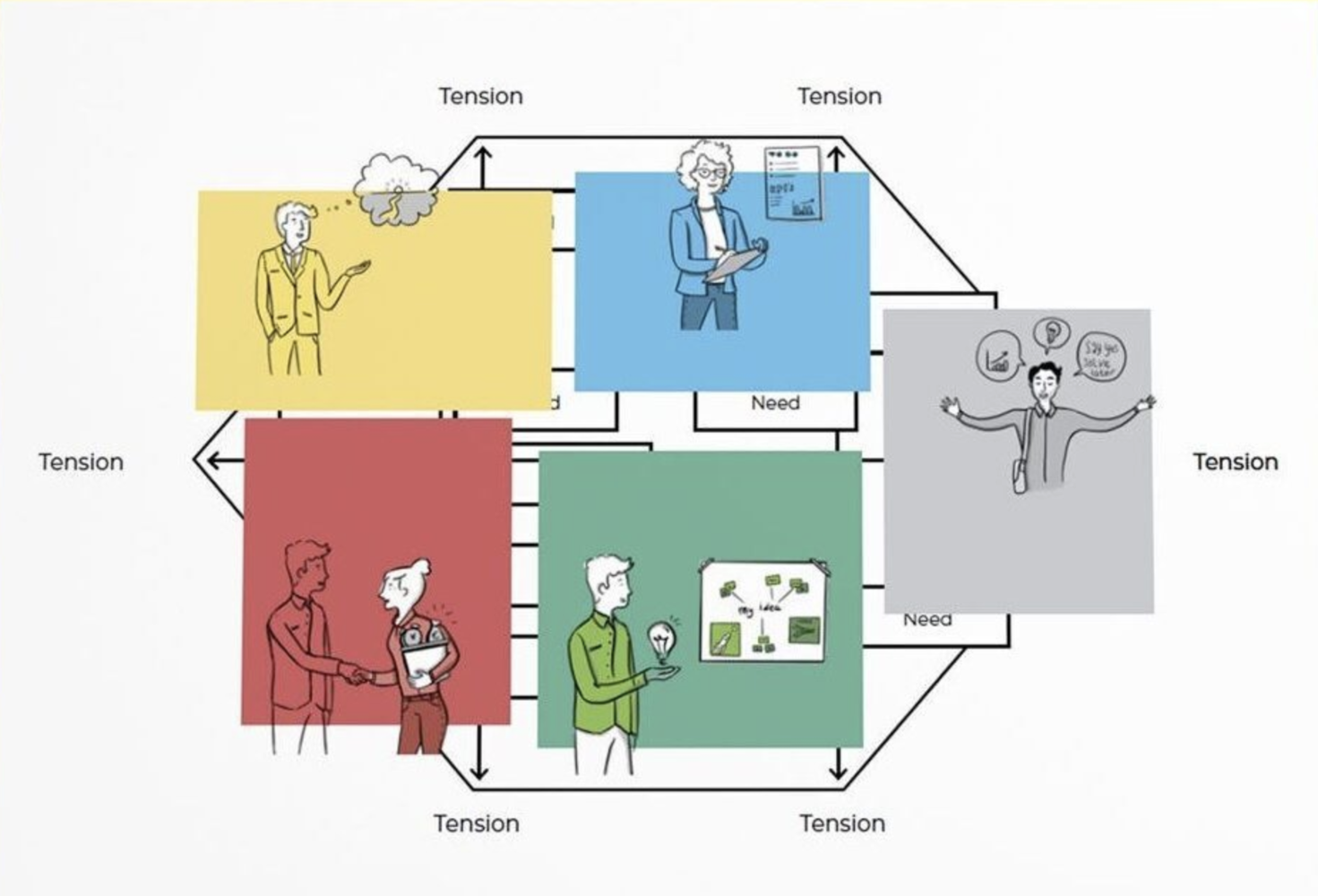
Inclusive design: is a framework to design for the widest possible group of people. As an example, Josephine gave the design for people with a permanent, temporary or situational disability and how you can incorporate this into typical design deliverables such as personas, empathy maps and customer journeys.
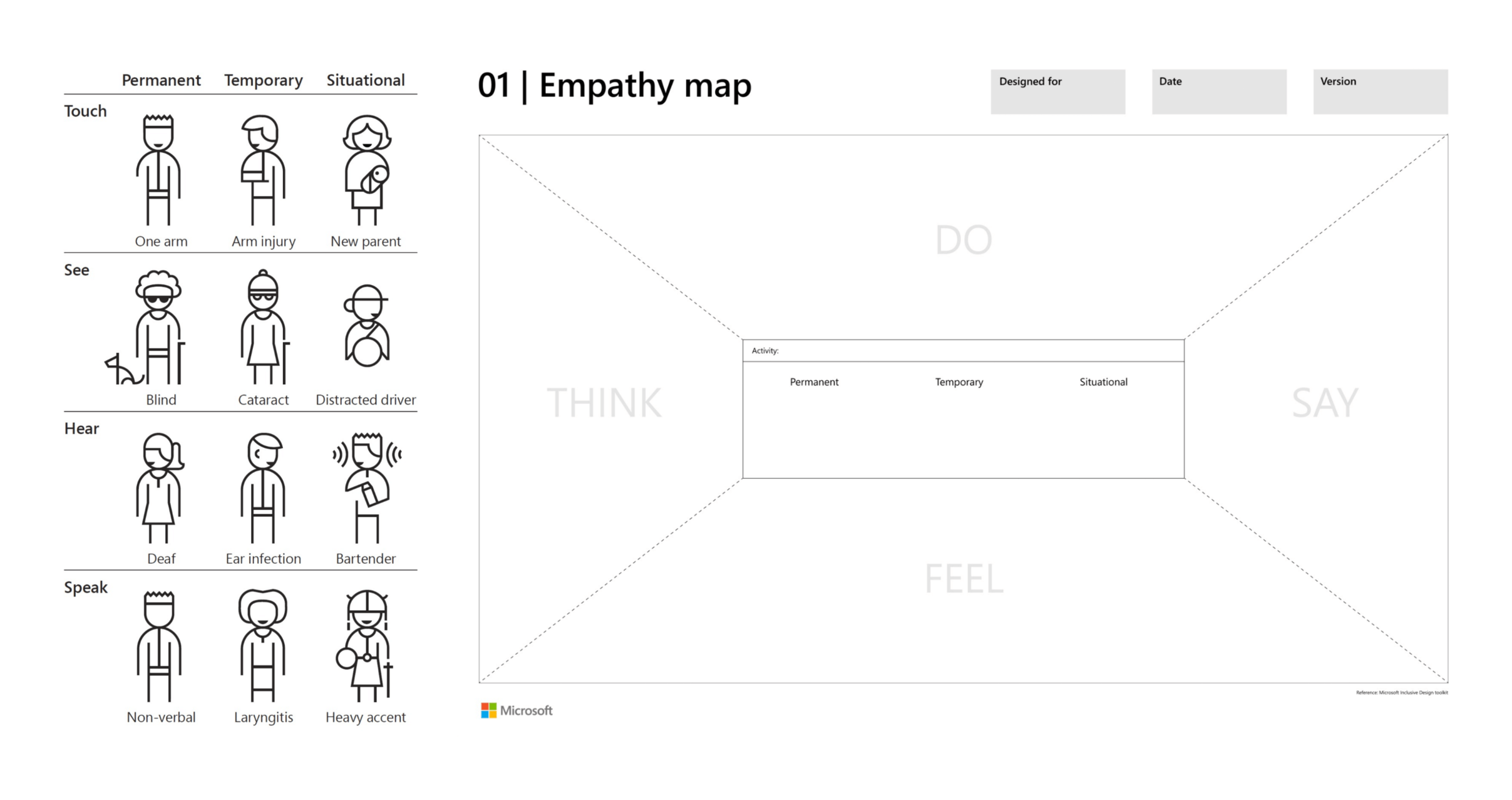
Unintended Consequences: when designing, you not only have to take into account the outcomes of thoughtful and targeted actions, but also the possible, probable, desirable and plausible. A method that you can use is the Futures Cone and as an example she gave the A.I. guidelines from Microsoft.
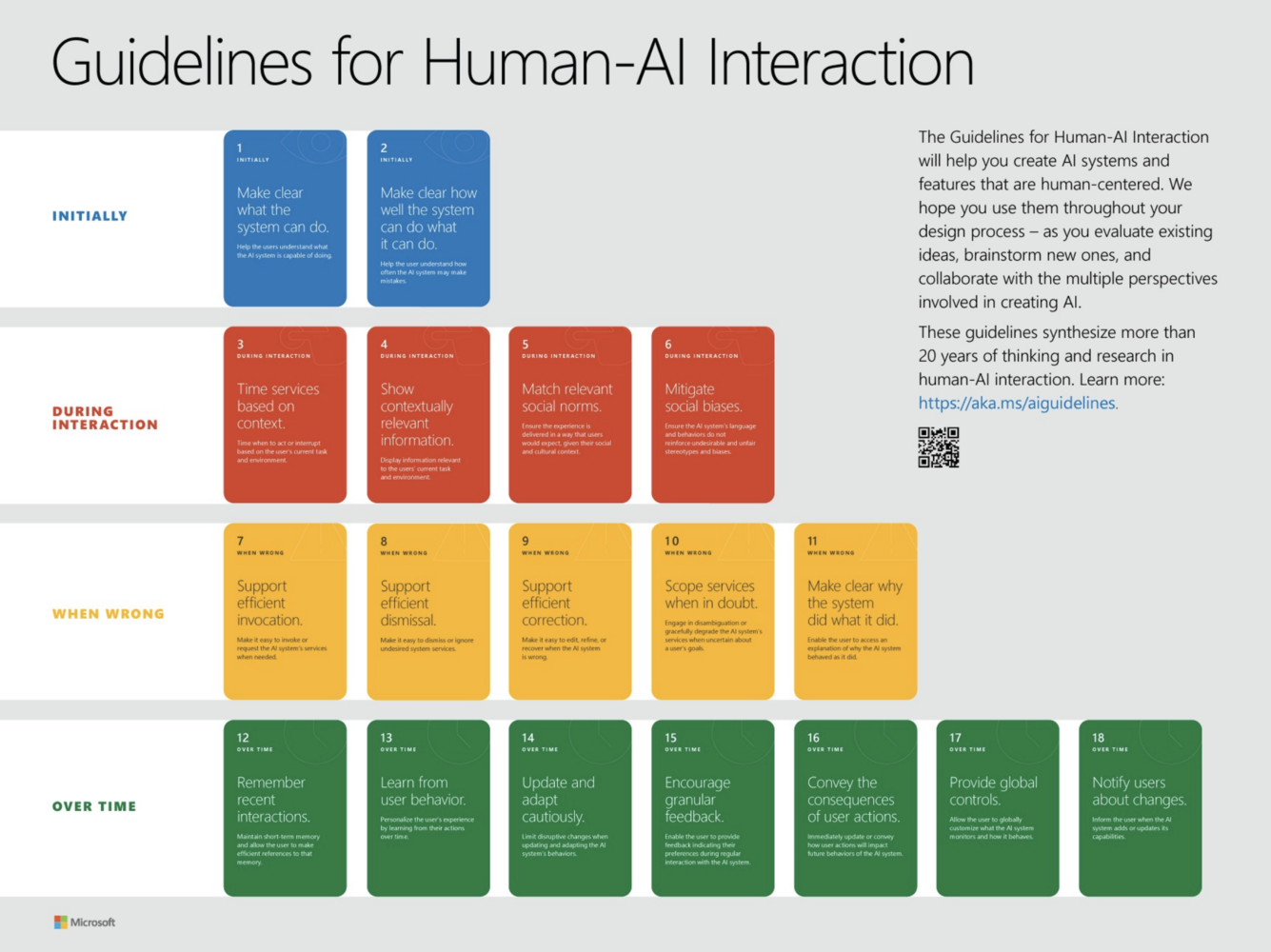
Circular Design Strategies: you can use it to reduce the negative environmental impact of your designs as much as possible. This has become even more important as the focus of designers broadens from products to organizations and economic systems. A good starting point for circular design are the guidelines.
Design-Led Digital Transformation at SNCF-Connect
David Ruiz is a recurring speaker at UX STRAT with impressive and beautifully designed cases of design strategy with plenty of room for user research. This time he shared with us his approach and experiences in redesigning the SNCF Connect app. The challenge was to integrate two popular apps for long- and short-distance travel. David used the following design strategy.
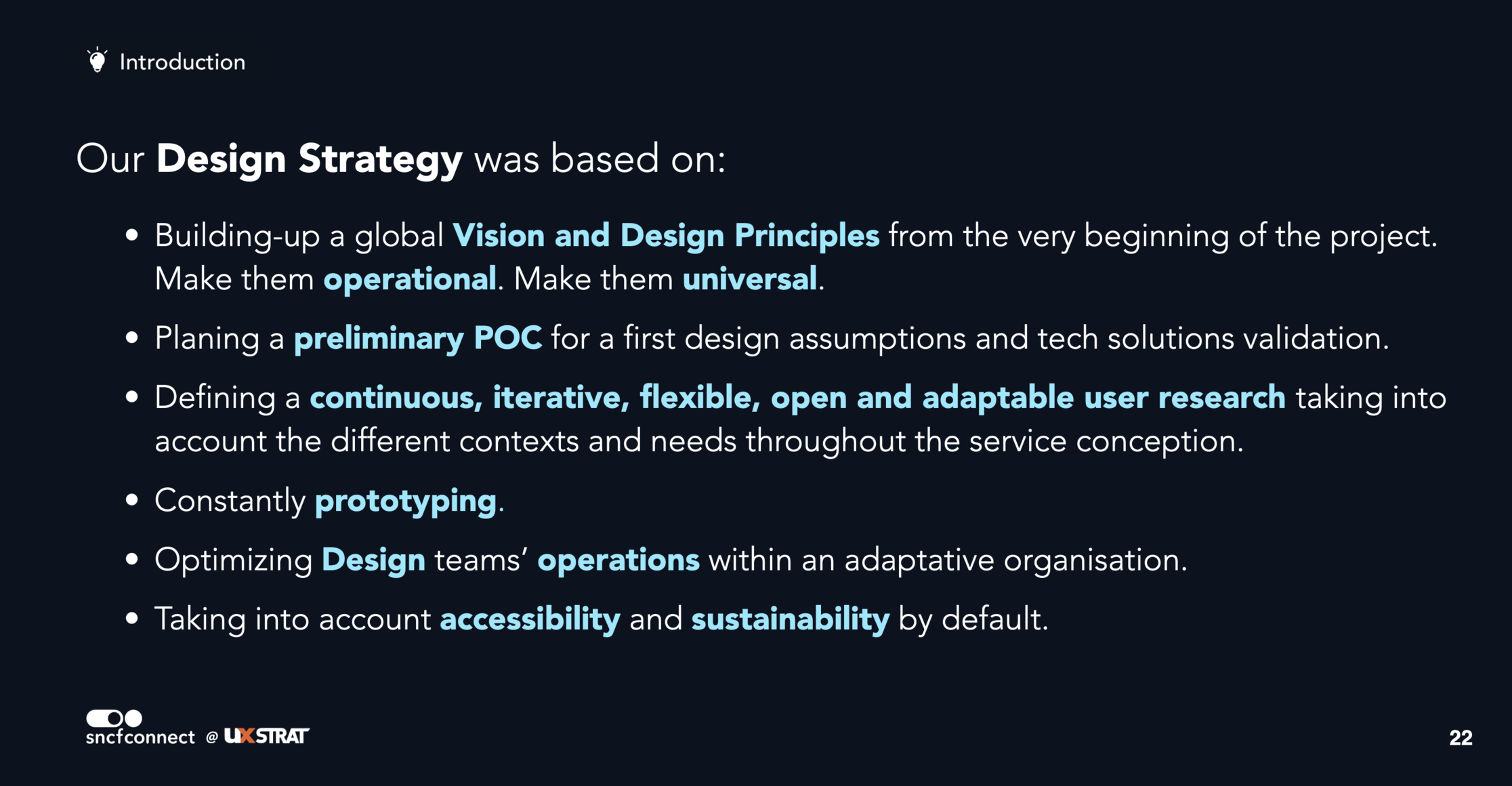
The amount of user research was really impressive: more than 7000 users were involved through various forms of qualitative and quantitative research spread over several years. Yet this was no guarantee of success because at the launch the new app received a lot of criticism because the concept was so radically different that existing users had to get used to it.
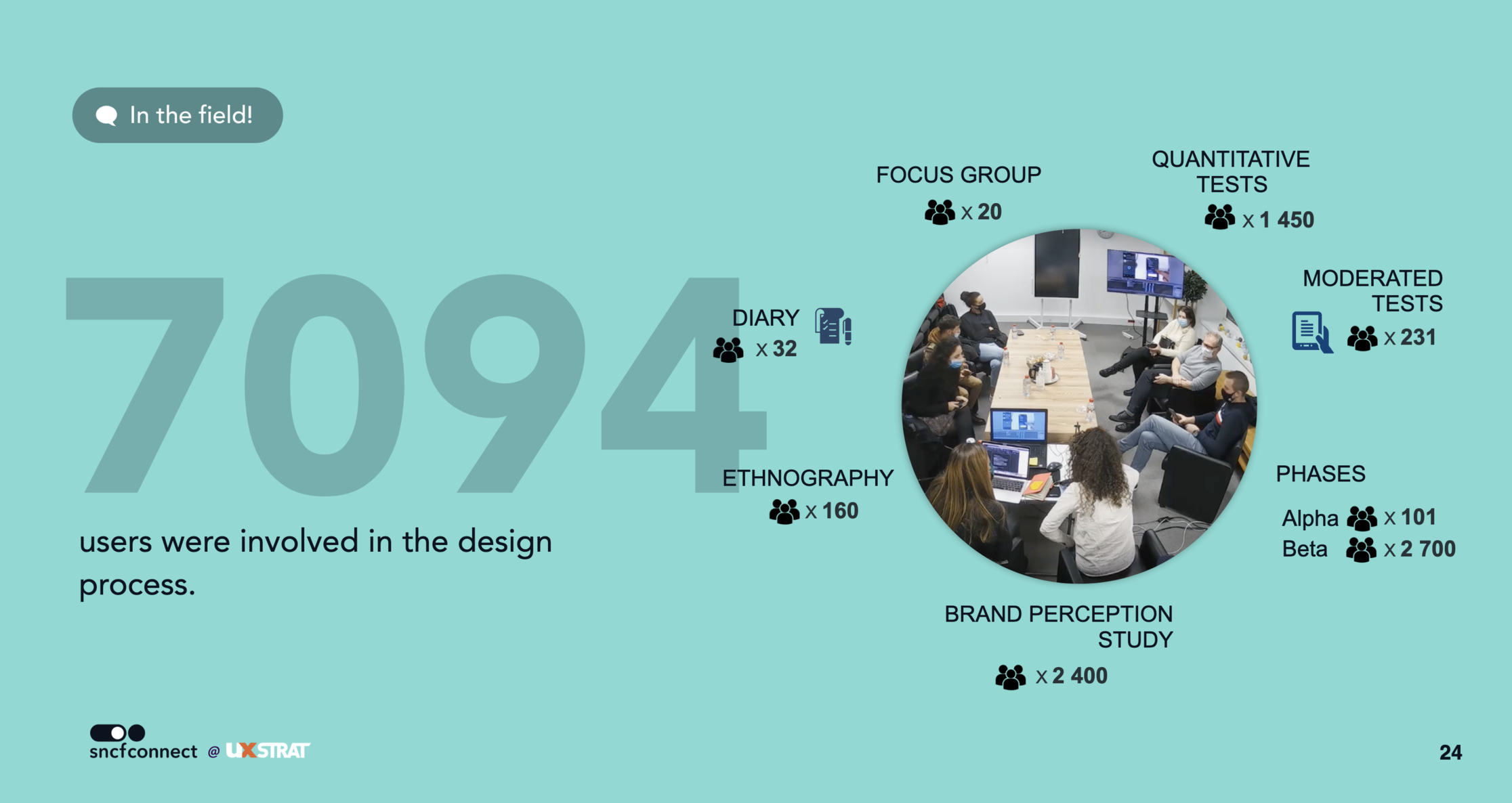
David's presentation will be full of beautiful visualizations such as the journey map below where the journeys of different types of users are shown very insightfully. For this reason alone, this case is worth the wait for the download.
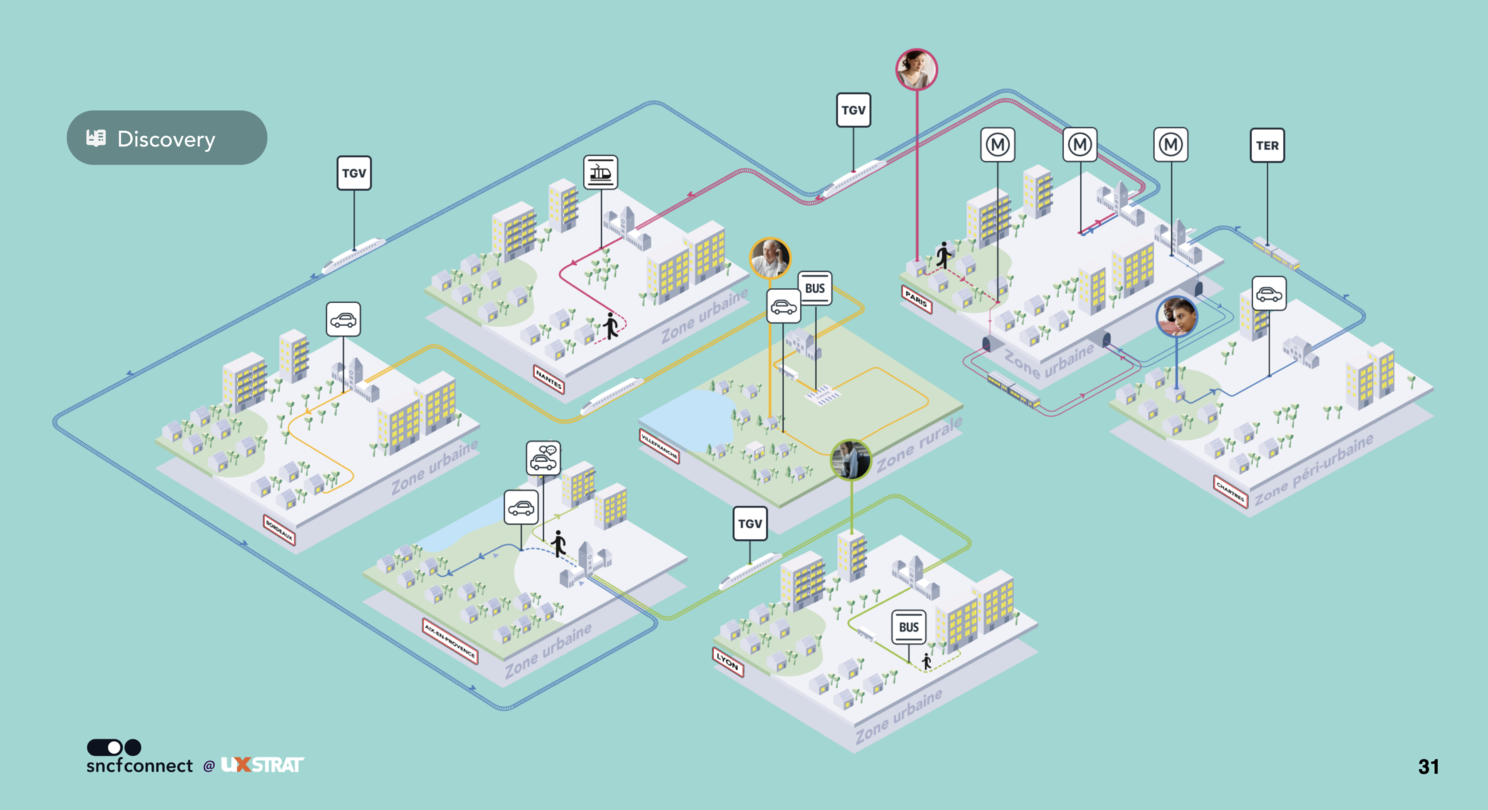
In addition, a lot of attention was paid to setting up and managing the realization of the app. For example, there was a clear Definition of Done for UX, the complexity of UX-related user stories was tracked over time and there was an overview of the extent to which the stories met the design principles.
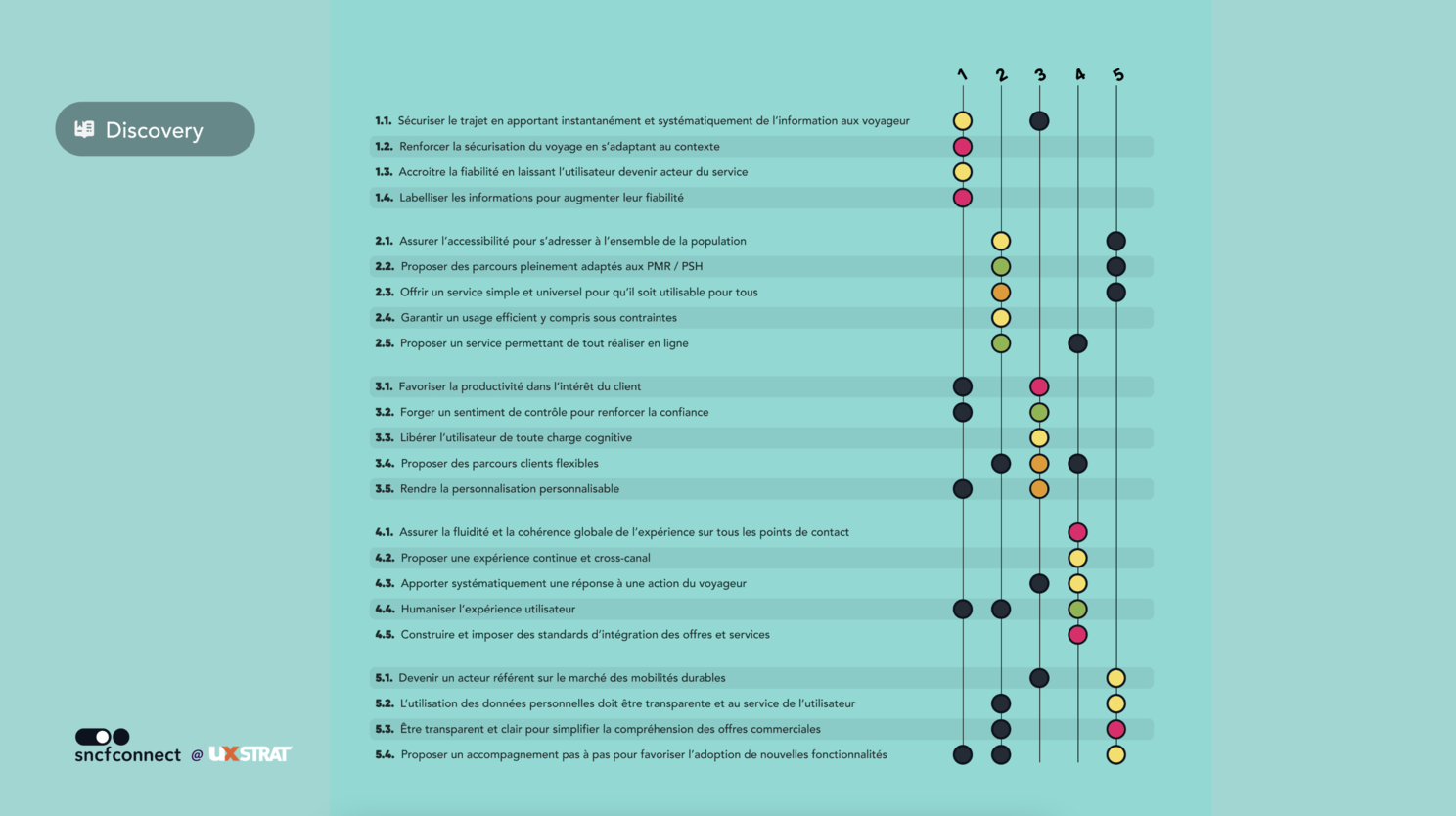
David concluded his case with an overview of the results achieved on the basis of a long list of KPIs such as: downloads, use, conversion, appstore ratings and decrease in customer contact but also increase in the number of trips made, sales and eco-score.
Designing Future Customer Experiences
Paul-Jervis Heath is an Inventor, Futurist and Innovation consultant at Modern Human and in his presentation he gave us a glimpse into how he designs the future. His starting point was a quote from science fiction writer William Gibson: "The future has already arrived. It's just unevenly distributed." He gave the example of the rolling suitcase that had already been invented 15 years before the moon landing but only became a success 15 years later. According to Paul, this all has to do with the right context and timing for an invention to land with the general public.
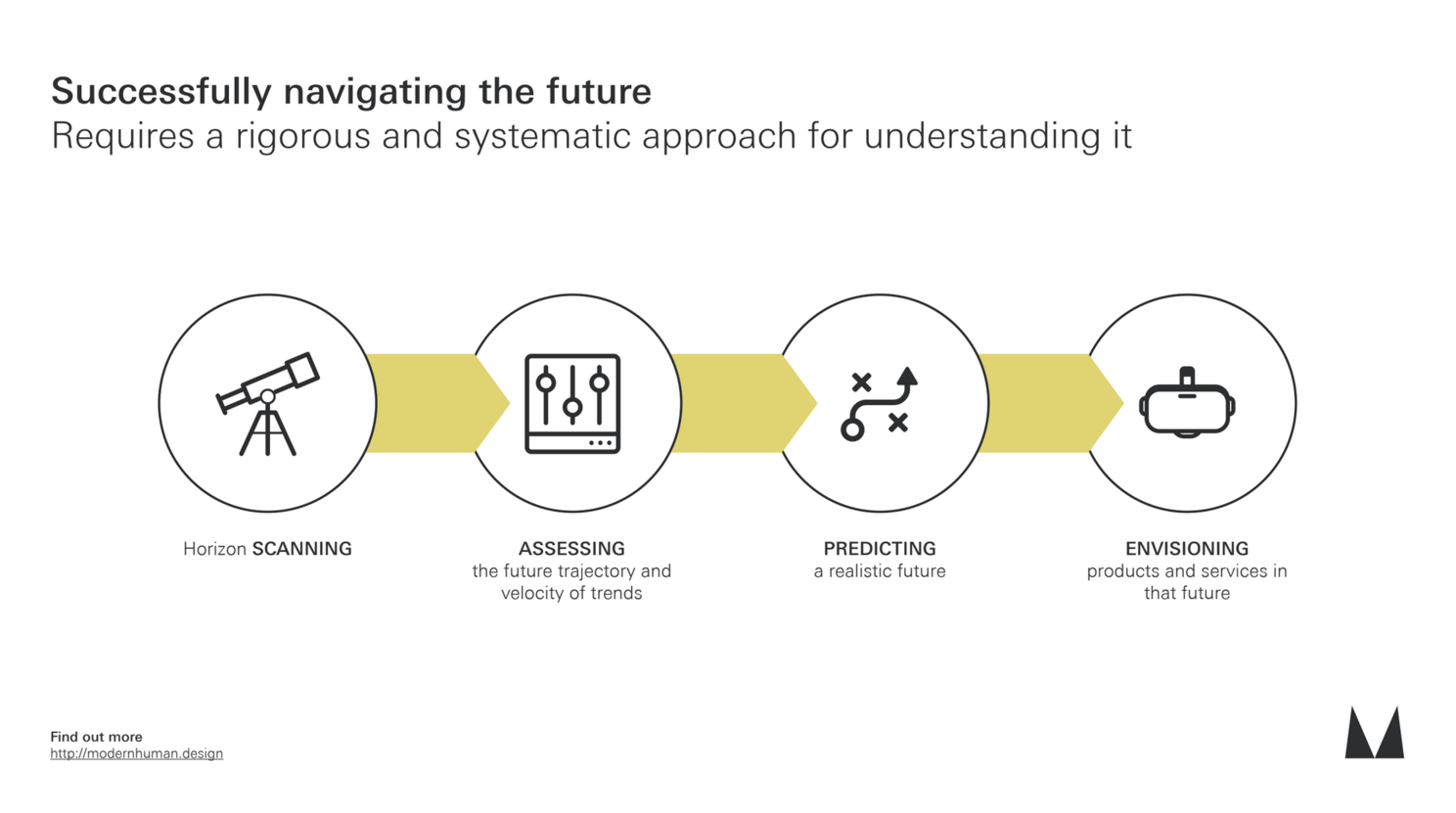
The approach Paul uses to innovate consists of the four steps: scanning, assessing, predicting and envisioning. His starting point is to gain inspiration by immersing himself in cultures or markets that are leading the way, such as South Korea. This allows you to observe whether early signals develop further into new trends.
He then looks at how the trends relate to each other and how they influence each other. For example, self-driving cars allow you to design houses differently, so there is more space in cities that you can then use for other purposes. But also people who drive cars professionally lose their jobs, creating unemployment that you can absorb with a basic income.
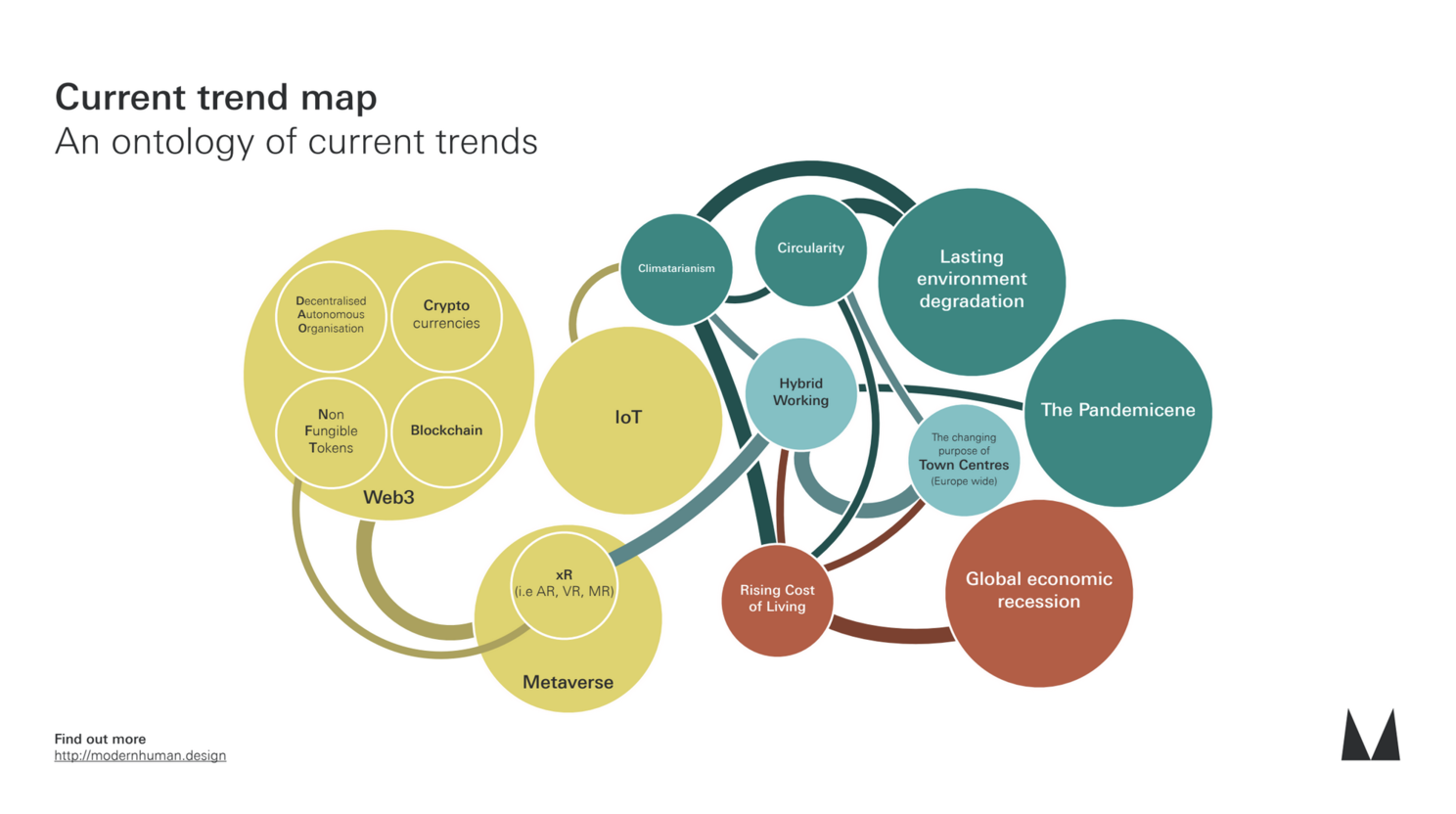
These inspiration, predictions, trends and behaviours then lead to concepts that lie on the chosen horizon. He then elaborates these concepts and visualizes them so that you can assess them. Paul ended with a question he regularly gets as a futurologist: "Are we ever going to pay for our coffee-to-go with Bitcoin". His answer: "No, it's just too damn complicated."
Framework for Psychological Safety in High-Performing Teams
Chrissy Welsh-Tiggeloven is Design Director at Deloitte Digital and one of her spearheads is creating a safe environment so that her team can achieve the best results. In a safe environment, people can freely express their ideas, give each other honest feedback, collaborate, experiment, take risks and make mistakes. According to Chrissy, a psychologically safe environment has many advantages.
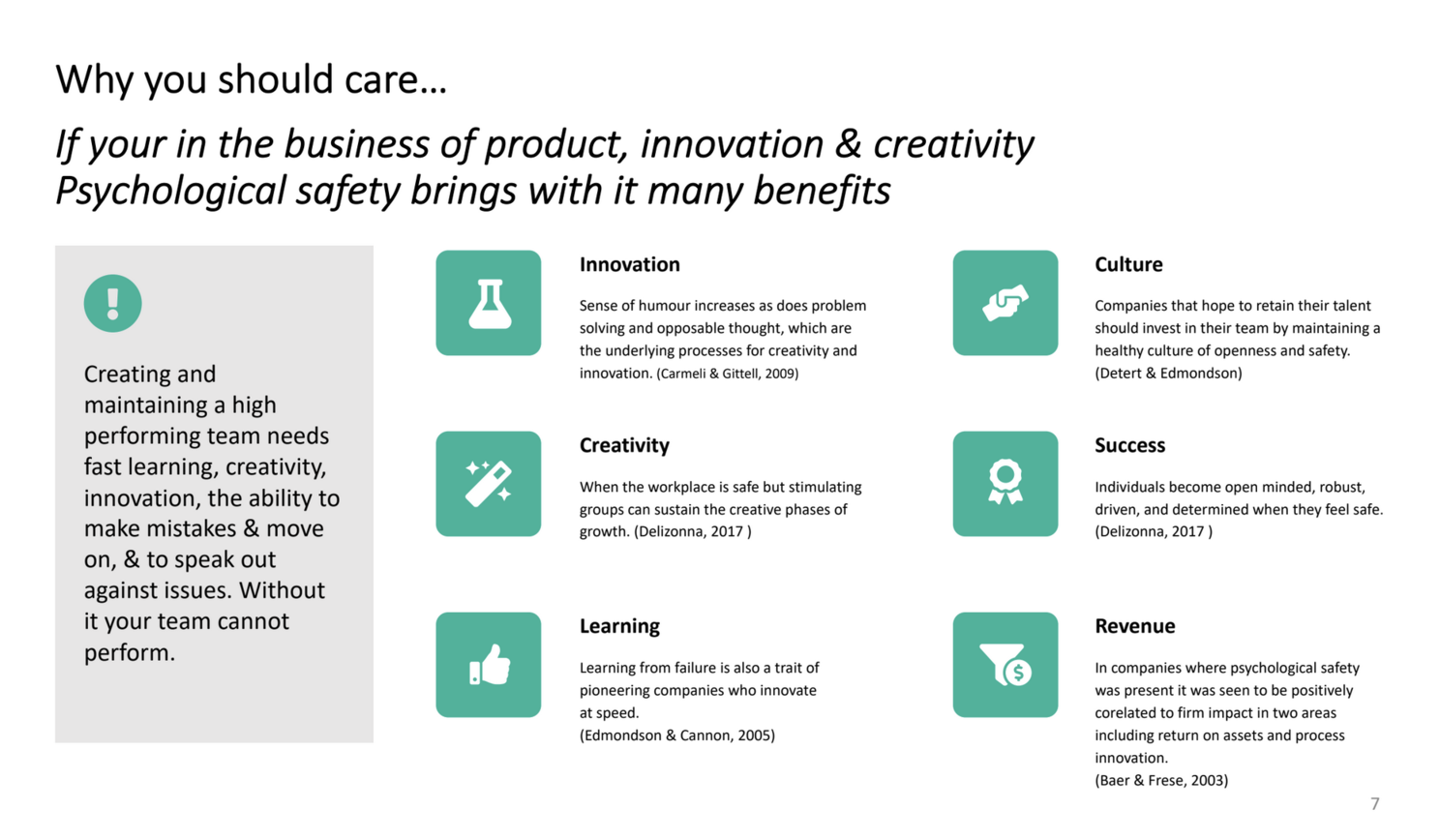
To investigate how safe her team members feel, she has set up a study. Because it is about people and their feelings, it is important to discuss the reason and goals of the research with the team in advance. Furthermore, it is important that the research is anonymous, that you ask the right questions, that you are transparent about how you are going to analyze and what you are going to do with the results.
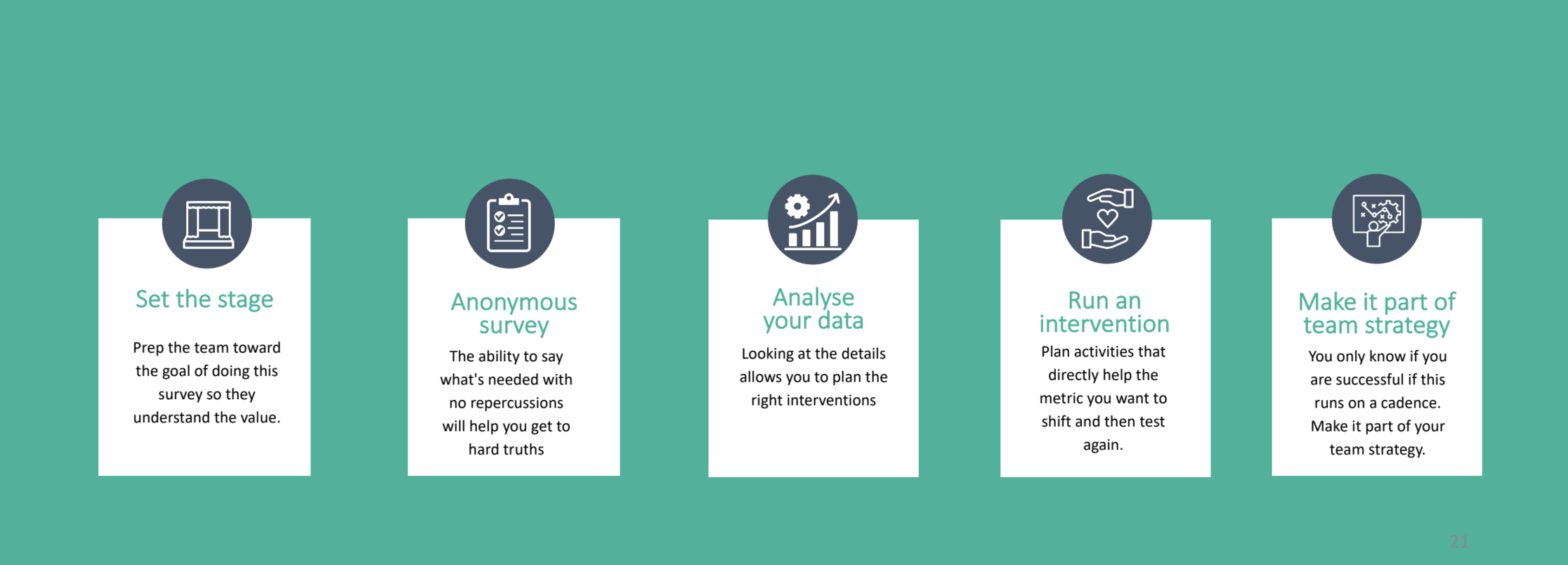
Chrissy eventually came up with 19 statements about leadership, colleagues and the team where participants can indicate according to a 7-point Likert scale to what extent they agree or disagree. Some examples of questions are: I can discuss my opinion about my work with my manager. If I make a mistake, I can discuss it safely with my team. I can always ask my colleagues for help or feedback.
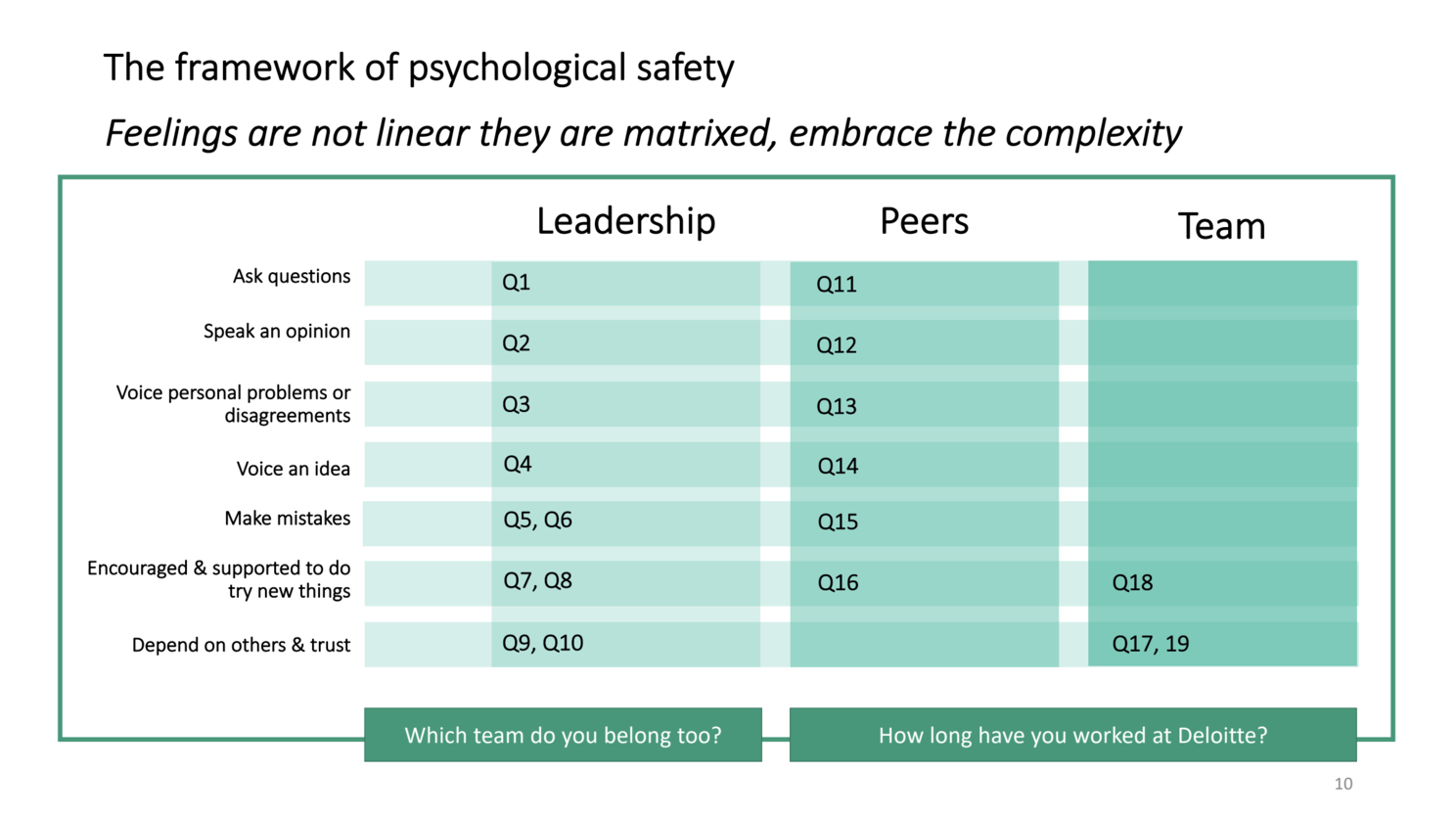
With the results of the research, you can then determine at which points interventions are needed and which form best suits them. For example, if a manager gives a certain group more attention, organizes an event around a theme or follows a training with the team. By repeating the research periodically, you can measure whether the interventions have had an effect.
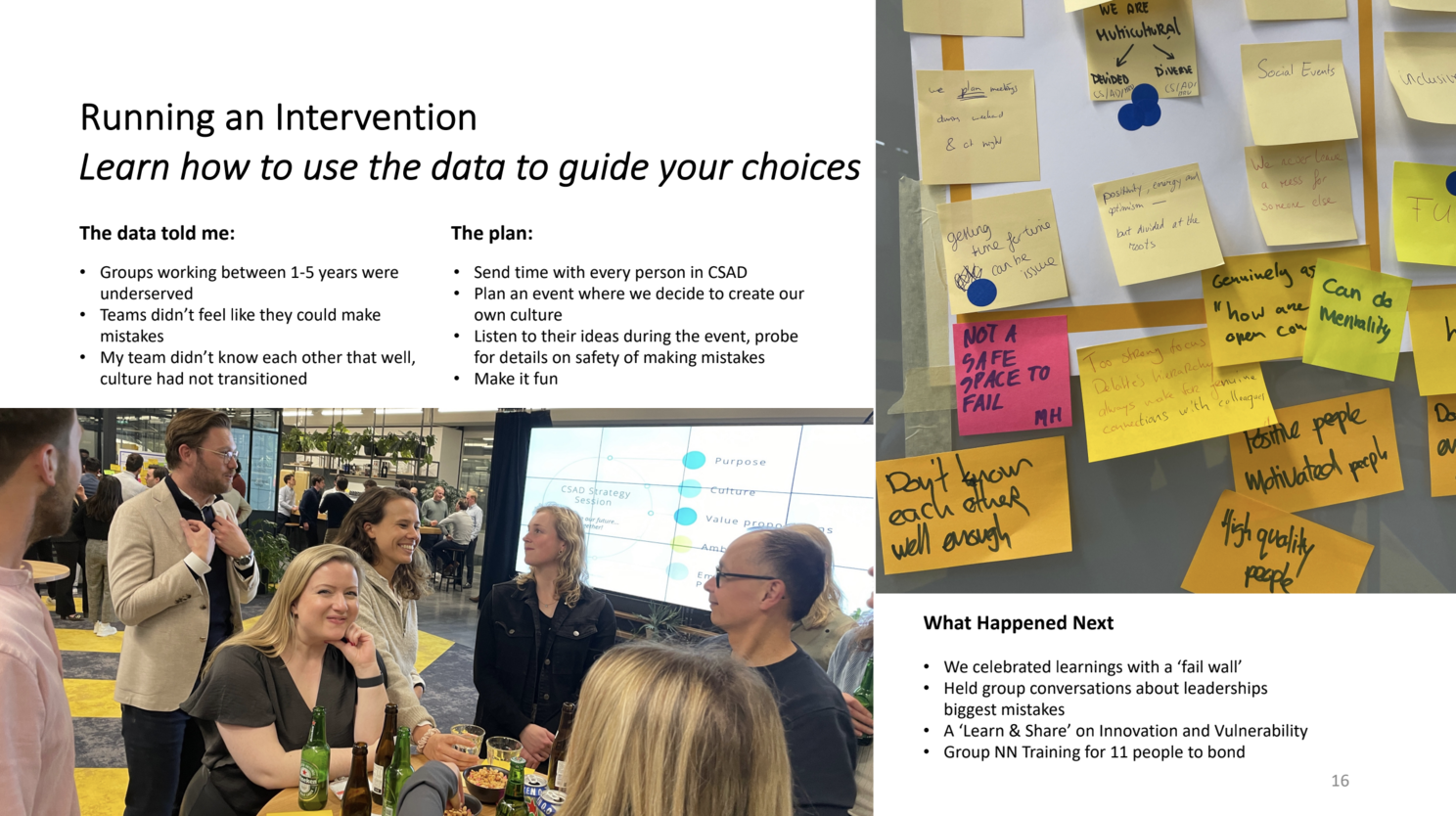
Designing for what’s next
Angel Brown, Group Director Experience Strategy at Digitas Health gave an overview of recent developments in the field of Artificial Intelligence and the Metaverse in her presentation. These developments are currently going so fast that we as designers have to ask ourselves how we want to deal with them. For example, which design principles will we apply and which new design challenges will we face?
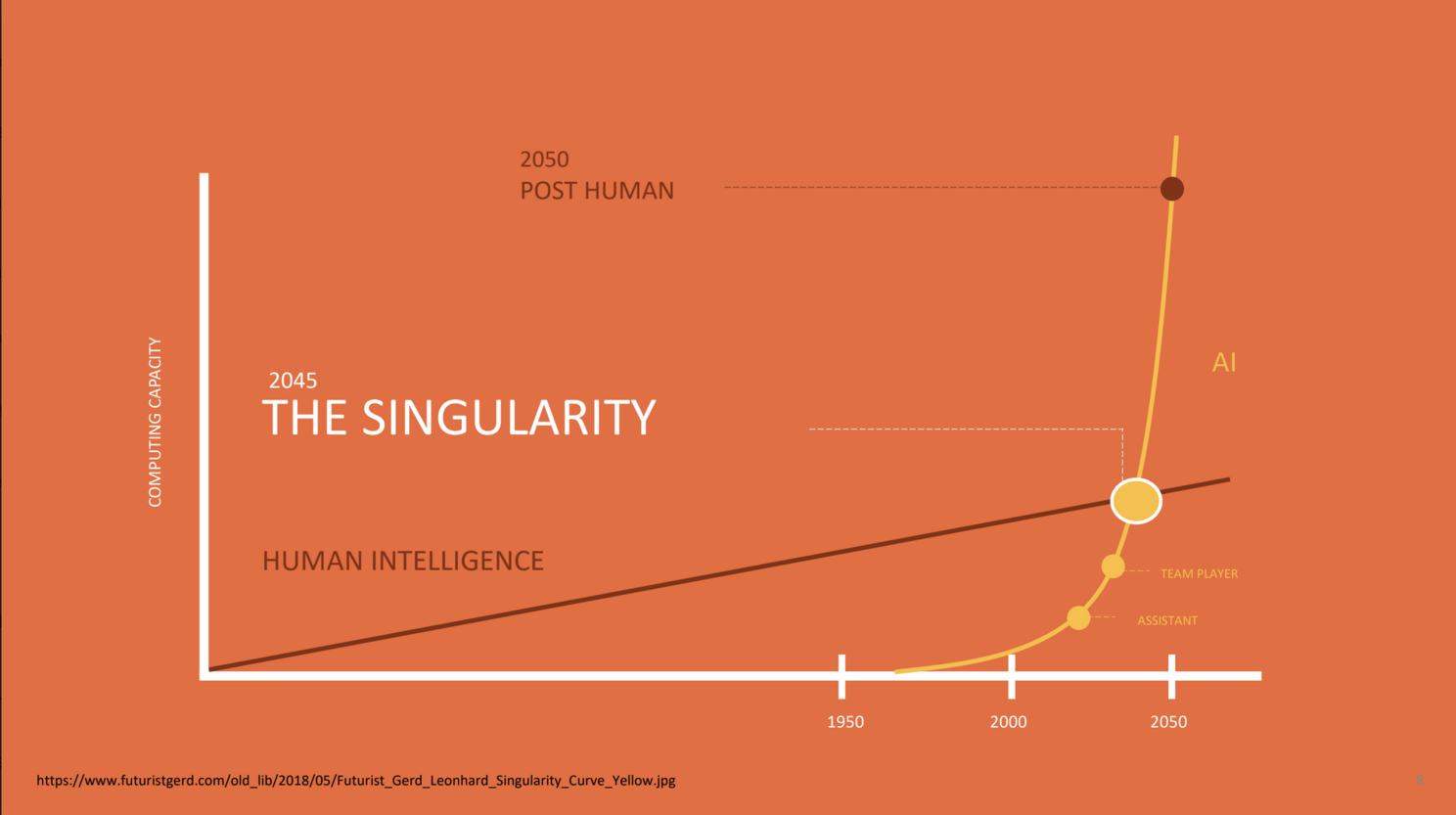
Using a graph, Angel showed that artificial intelligence is developing exponentially compared to human intelligence. It is expected that around 2045 the capabilities of an intelligent computer will exceed those of the human brain. Using a number of examples, Angel shows what new applications and interactions these developments are already leading to.
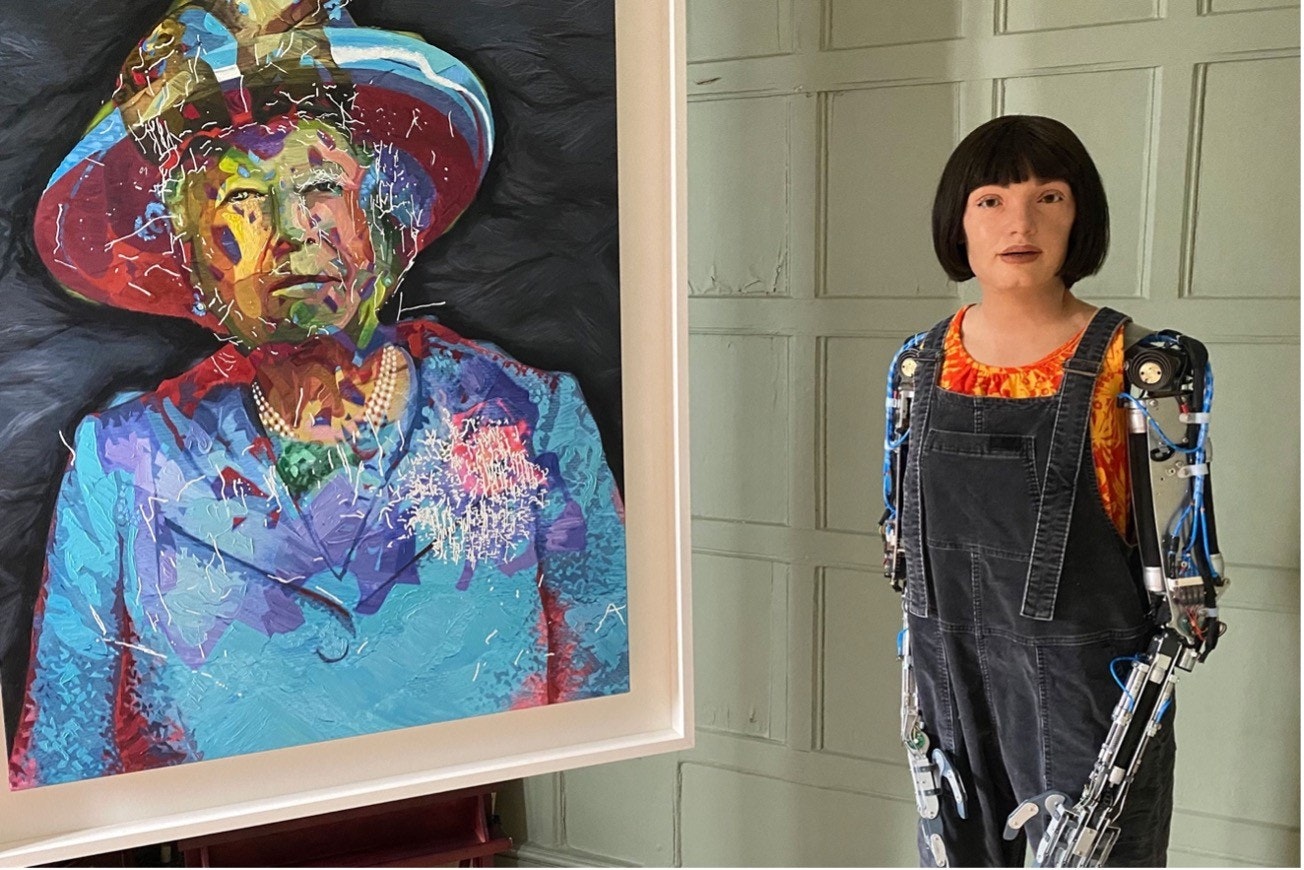
Ai-Da is a robot that says it works with people to create paintings and sculptures. Using cameras, robotic hands and A.I., Ai-Da creates original and valuable works of art that provoke interest and discussion. Ai-Da is a project by the director of the Oxford Art Galery Aiden Meller, who wants to show that creativity is not just something for people.
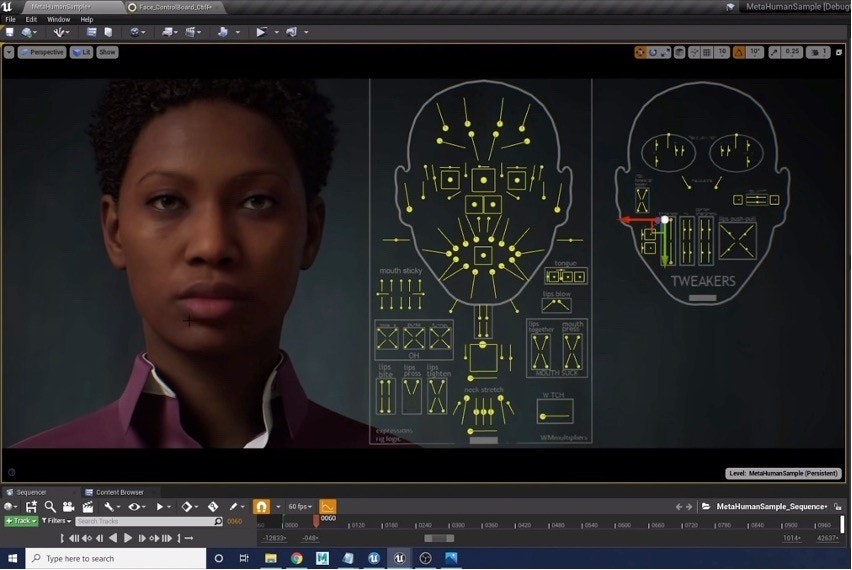
MetaHuman Creator is a tool that allows designers to design extremely realistic-looking digital people. Previously, this process took several months, with MetaHuman Creator this can be done in just a few minutes. In addition to appearance and mimicry, body posture, movements and pronunciation can also be designed. From the gaming and film world there is a lot of interest in MetaHuman and the expectation is that these worlds will eventually fade away. Is this the future of customer contact?
Watch the Epic Games introductory video.
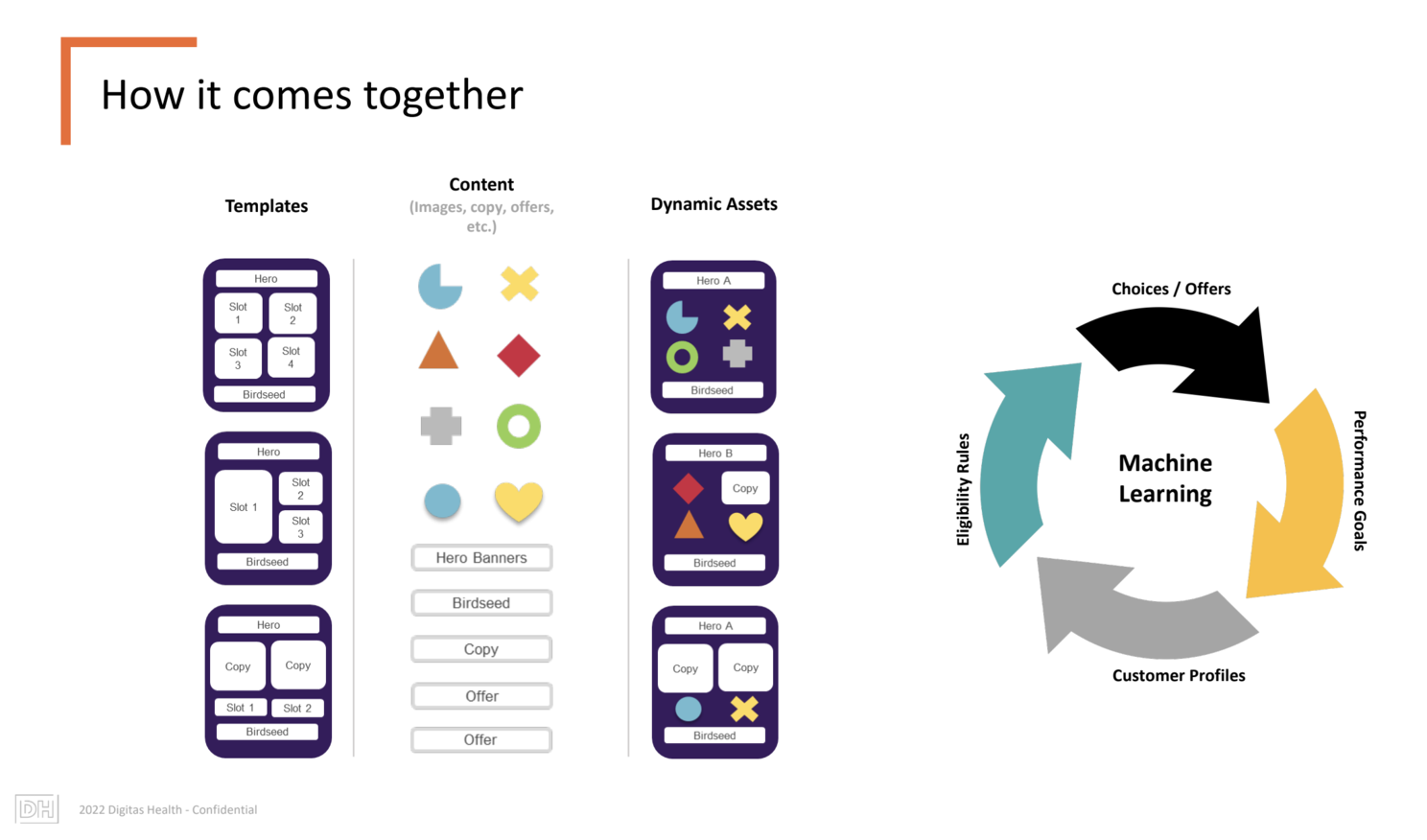
Machine Learning is a form of A.I. that ensures that digital services become increasingly personal. As a designer, you no longer design the 'page' but the 'mechanism' and the 'elements' with which M.L. will realize that personal experience. M.L. can use a wide variety of parameters that determine the who, what, where, when, why and how. As an example, Angel shows a proof of concept for the Nike website where each individual experience is virtually unique.
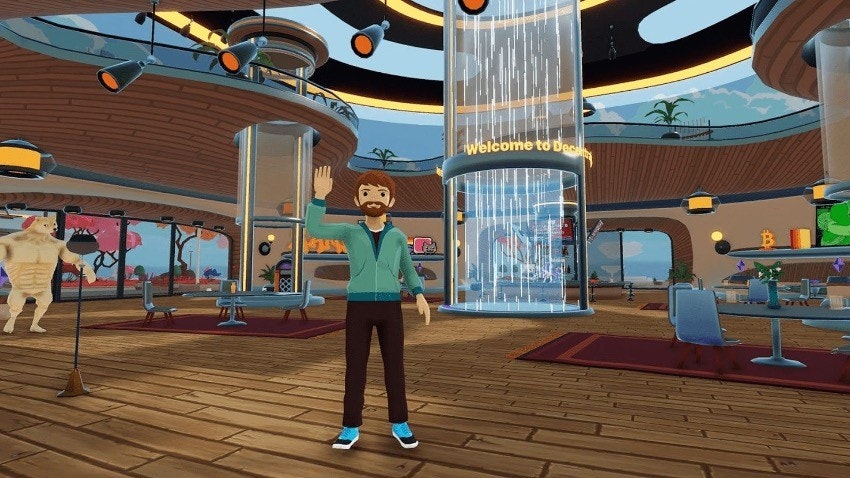
There are also plenty of developments in the Metaverse that give designers new challenges. An example of this is Decentraland. Decentraland uses the Ethereum network and has its own cryptocurrency and NFTs. This allows users to buy digital plots but also sell their own digital creations. What makes Decentralized special is that it does not have central ownership but that it is an autonomous decentralized network organization. Through the link with blockchain technology, value created in the virtual world can also be used in the real world and vice versa. This effectively creates a parallel economy.
Conclusions
As far as I'm concerned, UX STRAT has given a nice interpretation to the theme "Meaningful Relationships" this year. Not only because we could be physically together with colleagues again for inspiration, discussion and catching up with a beer, but also by providing insight into new developments within our field that will help to give more meaning to the relationships with our colleagues, customers and users.
I'm already looking forward to next year and who knows, Maybe Informaat will be back on stage with a good story!
About the author

Rob van der Haar
Principal designer
UX
Events
Events
